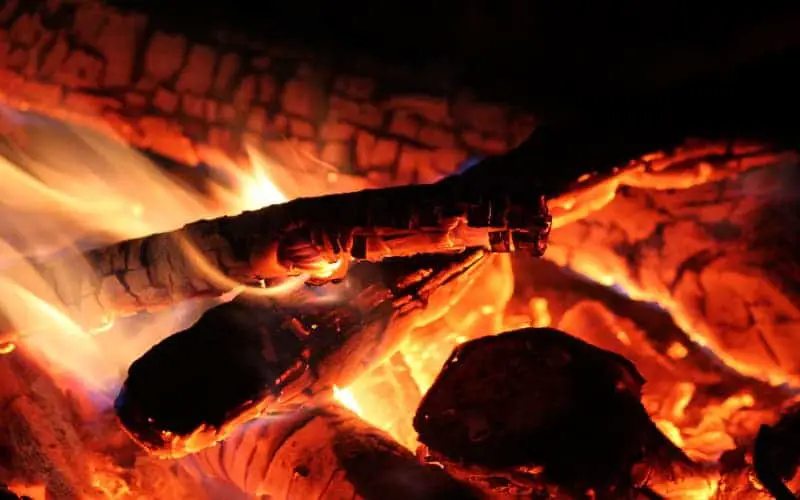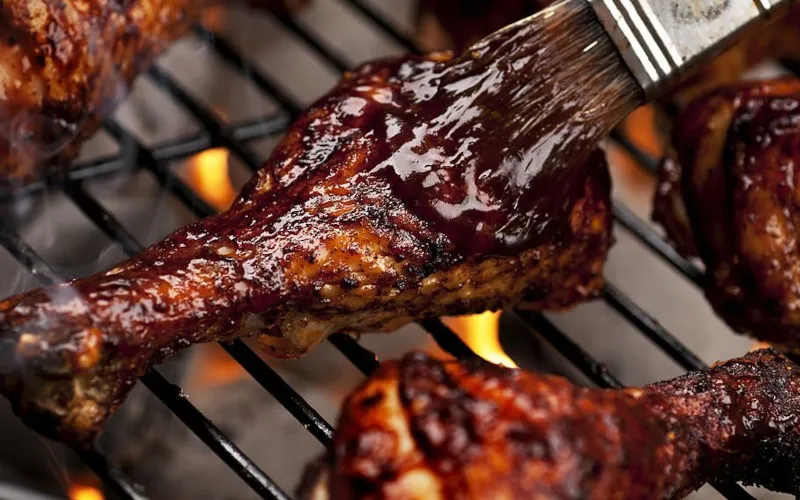When choosing brisket for your barbecue, you’ll have to decide if you want flat or point. The choice is entirely up to preference – there are no differences between the two types that will affect how they cook or taste when barbecued.
In this article, we’ll discuss the pros and cons of each type so you know which one is right for you.
What is a Flat Cut?
The flat cut is a type of brisket that comes from the breast or lower chest. A flat cut of beef is a cut across the full width of the meat. It has more marbling and can be moister but also fattier.
The flat is able to fit into a smoker better because it has a larger surface area which means more space for marinating and smoking flavors to penetrate into before cooking.
It can be used for cooking, but it is typically used to make ground beef or burger. The more common form of this cut is the chuck, which comes from the shoulder of the animal. Other types are sirloin, which comes from the upper leg, and ribeye which comes from the rib section closer to the head.
The advantages of flat cuts are that they are cheaper than other cuts due to their availability in mass quantities.
They also provide versatility for different types of cooking methods because they come with a number of different thicknesses depending on where they came from. Chuck roasts can be cooked as a pot roast or as steak whereas sirloin is suitable for grilling or frying.
The disadvantages of this cut are that it can be tougher than other cuts due to the high amount of connective tissue, which breaks down during cooking and becomes chewy if overcooked.
The thickness also makes them unsuitable for certain types of cooking like deep-frying where you want something very thin.
Some people will argue that a flat cut is easier to cut with a fork if not using a knife so if you’re looking for convenience, a flat cut might be the better choice for you.
Pros:
- Flat cut is more flavorful and easier to slice after cooking at home.
- It is perfect for slicing and making sandwiches after cooking.
- It’s not as flavorful since most of the marinade will drip off during cooking, so it doesn’t have quite as much smoke flavor or taste to it when sliced. This can be a good thing if you don’t want too strong of a smoke flavor.
Cons:
- Flat cut is much leaner than point, so it can be a little more difficult to cook.
- It can fall apart when sliced after cooking.
What is a Point Cut?
A point cut of brisket can be tougher and can be difficult to cook but some people prefer this type because it holds together better when sliced after being cooked.
Point cut is a narrower, thinner cut from the end of the brisket. Point-cut is chewier but less fatty, and it’s also cheaper than flat cut.
One of the main reasons point brisket is often preferred is because it tends to hold together better when sliced after being cooked.
Point makes an excellent cut for slicing and dicing after cooking because it holds together better than flat, so it’s well-suited for pulled or sliced BBQ.
This means that it won’t fall apart as easily when you’re trying to eat it and that there’s less risk of any fat getting on your hands (which can be annoying if you’re eating by yourself).
Pros:
- More marinade flavors will seep into the meat. This makes it great for those who want an intensely flavored smoke.
- It has a stronger smoke flavor than flat cut.
- It is better at holding together when sliced.
Cons:
- Point cut costs more to purchase at the butcher or grocery store, which could make it more expensive for consumers who buy large quantities.
Flat Cut vs Point Cut: Which One is Better?
Point cut is denser and contains more collagen which makes it tougher. When cooked, the collagen breaks down making it softer and more tender. Point cut can also be more flavorful because there’s a higher ratio of surface area to mass.
In contrast, flat brisket has a larger surface area which means it holds marinades and smoke flavors better. If you’re looking for less tough meat that will fall apart easier when cut, then flat might be the way to go.
Some people prefer flat cut because they think that point cut is too tender and falls apart easily. All cuts of meat need to be handled with care so as not to overcook them.
Ultimately the preference comes down to personal taste – each type has its own pros and cons so it’s up to you to decide which one is best for your barbecue.
What Cooks Faster Point or Flat?
Point cut starts off cooking quicker but this will depend on the level of thickness. Flat cut, on the other hand, takes a little longer to cook and has a larger surface area which means more room for marinating and smoking flavors to penetrate into before cooking.
Point can be tougher than flat but some people prefer it because when sliced after being cooked it holds its shape better. That said, when done properly both cuts can come out tender and juicy.
Which is Better: Corned Beef Points or Flats?
If you are looking for a cut of meat that is flavorful and easy to cook, look no further than the corned beef flat. Corned beef flats are often labeled as “corned beef brisket” or “beef brisket”, but they are actually just thinner cuts of the same muscle.
Corned beef points are larger in size with more fat content, which can make them tougher to chew. If you are looking for a good meal that is easy to prepare, then the corned beef flat is your best bet.
Conclusion
Whether you decide on flat or point, it’s important to know what the differences are so that your barbecue experience is as good as possible.
The choice is entirely up to preference – there are no differences that will affect how they cook or taste when barbecued.
Whether you want a leaner cut or one that has more fat in with the meat, we hope this article helped clear up some confusion on what’s available at your supermarket when choosing between flat and point cuts.





